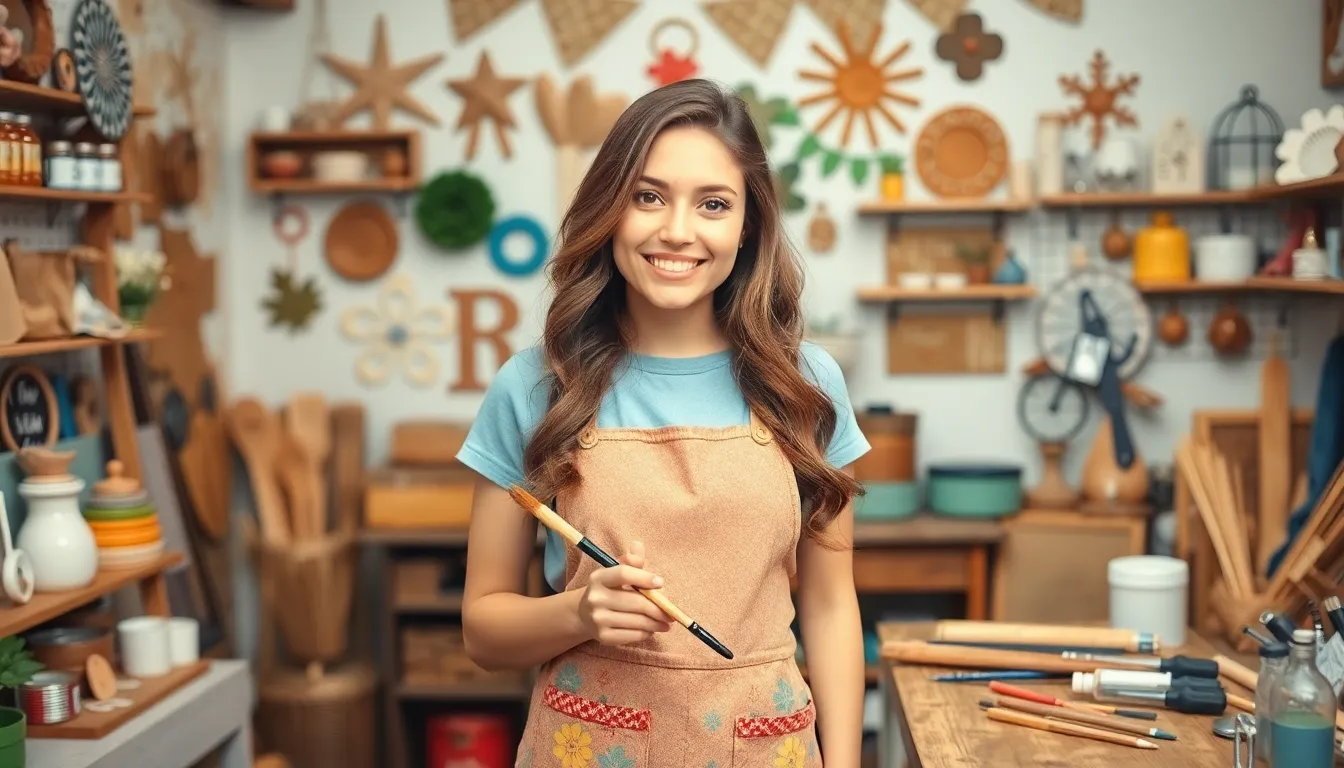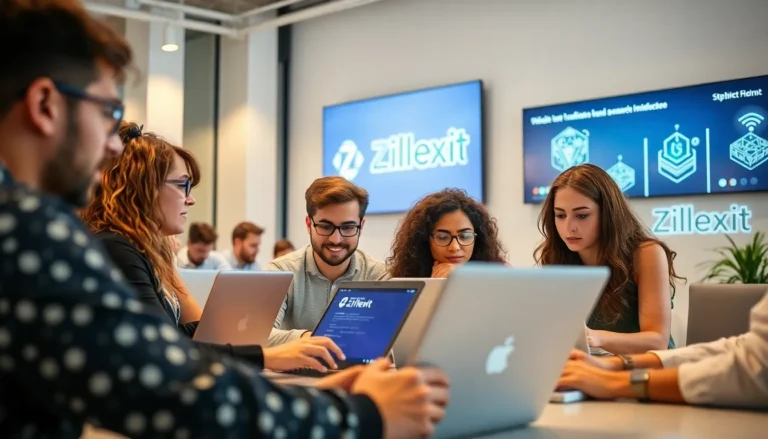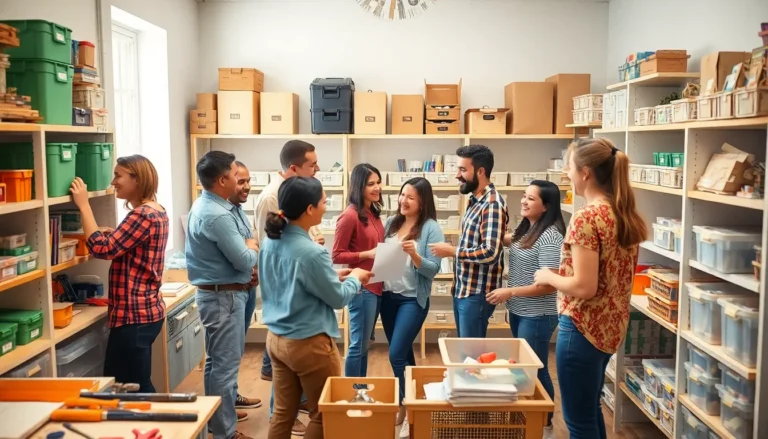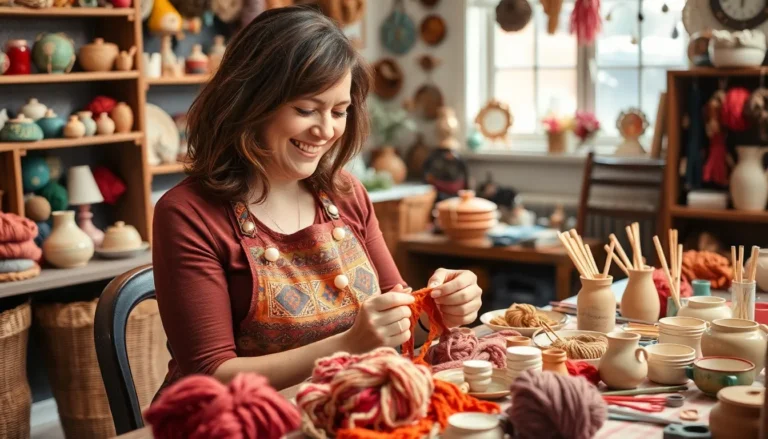Table of Contents
ToggleIn a world where creativity knows no bounds, digital DIY content has emerged as the ultimate playground for the imaginative. From crafting quirky home decor to mastering the art of baking the perfect sourdough, it’s never been easier to unleash one’s inner artist—all while wearing pajamas, of course. Who needs a fancy workshop when the internet is bursting with tutorials that make even the most complicated projects feel like child’s play?
Understanding Digital DIY Content
Digital DIY content represents a transformative approach for those interested in fostering creativity. By leveraging online resources, individuals connect with artistic endeavors more effectively than ever.
Definition and Scope
Digital DIY content encompasses a range of creative projects accessible through online platforms. This includes crafts, home improvement initiatives, and culinary creations. Users engage with various media, including videos and step-by-step guides. These resources simplify complex tasks, making them manageable for anyone, regardless of skill level. Consequently, the scope extends to numerous hobbies, encouraging a broader audience to participate in creative expressions.
Popular Platforms for Digital DIY Content
Several platforms host vibrant communities focused on digital DIY content. YouTube serves as a leading source, offering countless tutorials and demonstrations across diverse interests. Pinterest highlights visual inspiration, featuring projects with direct links to instructions. Instagram thrives on sharing completed crafts and baked goods, fostering interaction among users. TikTok utilizes short videos to present quick ideas and tips, appealing to younger audiences. Websites like Etsy and Instructables provide comprehensive guides and resources, solidifying their role in this dynamic landscape.
Benefits of Engaging with Digital DIY Content
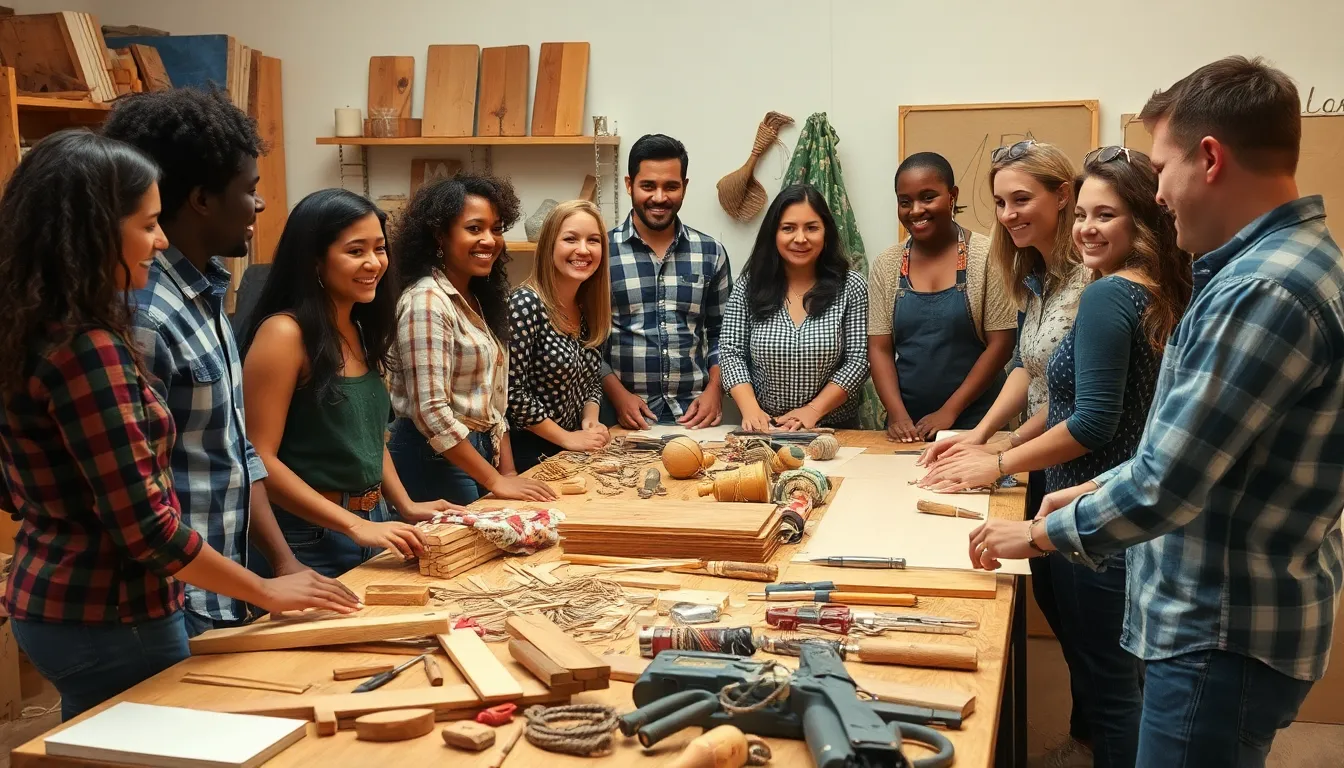
Engaging with digital DIY content offers numerous advantages, enhancing creativity and providing opportunities for skill enhancement.
Learning and Skill Development
Learning through digital DIY content fosters skill development across various disciplines. Users gain access to easy-to-follow tutorials and videos that simplify complex tasks. Knowledge grows as they try new techniques, from woodworking to sewing. Each completed project boosts confidence, increasing their willingness to take on more challenging endeavors. Skill sets expand as individuals explore diverse subjects, enabling them to tackle home improvement, crafts, and culinary arts. Creating meaningful projects reinforces understanding and helps build practical skills applicable in real-world scenarios.
Community Engagement
Community engagement thrives within the digital DIY space, creating connections among like-minded individuals. Platforms like Pinterest and Instagram cultivate vibrant communities where users share their creations and inspirations. Participation in discussions enhances the learning experience, as individuals can ask questions and receive feedback. Engaging with others leads to collaborations, enriching the creative process. Users often participate in challenges or themed projects, fostering a sense of belonging. Sharing successes or failures offers valuable lessons, proving that creativity flourishes in a supportive environment.
Popular Types of Digital DIY Content
Digital DIY content encompasses various formats that enable creativity and skill development. Each type offers unique benefits and engages users in distinct ways.
Video Tutorials
Video tutorials serve as dynamic resources, presenting concepts visually. Creators demonstrate techniques clearly, making it easier for viewers to replicate projects. Users find essential guidance in platforms such as YouTube and TikTok. Learning through videos suits diverse skill levels, from beginners to seasoned crafters. Many tutorials include tips and tricks to improve the final outcome. Engaging with video content fosters a sense of connection, as creators often share personal insights and their unique styles.
Step-by-Step Guides
Step-by-step guides offer structured approaches for completing projects. Users appreciate the clarity provided by written instructions accompanied by images. Many platforms like Pinterest and Instructables host a plethora of these guides. These resources simplify complex tasks, breaking them down into manageable sections. Readers can refer back to specific steps as needed, ensuring a smoother experience. Finding detailed guides encourages experimentation, allowing more people to tackle ambitious projects with confidence.
Challenges in Digital DIY Content Creation
Digital DIY content creation comes with several challenges that creators face. Quality control poses a significant hurdle. Ensuring that videos and guides provide accurate information proves essential. Inconsistencies in visual and written content can lead to confusion and frustration for users. Creators must invest time and effort in editing and fact-checking their materials.
Audience engagement presents another obstacle. Captivating an audience demands consistent content that resonates with viewers. Creators often struggle to generate interest, especially in a saturated market. It’s vital to seek feedback from the community to adapt and improve projects. Engaging with followers through comments and social media interactions encourages a loyal following but requires ongoing commitment from creators.
Future Trends in Digital DIY Content
Digital DIY content continues to evolve, driven by technological advances and changing consumer behavior. These trends reshape how individuals engage with creative projects.
Emerging Technologies
Innovative technologies significantly enhance digital DIY content. Virtual reality (VR) and augmented reality (AR) offer immersive experiences, allowing users to visualize projects before starting. 3D printing enables creators to produce customized objects with precision. Furthermore, artificial intelligence (AI) simplifies search processes, recommending tutorials based on user preferences. Blockchain technology brings transparency to transactions on platforms like Etsy, ensuring creators receive fair compensation. These advancements pave the way for more personalized and efficient DIY experiences.
Shifts in Consumer Preferences
A growing emphasis on sustainability influences consumer preferences in digital DIY. Many individuals increasingly seek eco-friendly materials and practices for their projects. Additionally, demand for user-generated content rises, as viewers often trust peer recommendations more than traditional advertising. Micro-influencers play a vital role, sharing relatable content that resonates with audiences. Engagement in collaborative projects also gains popularity, fostering a sense of community among creators. As preferences shift, digital DIY content must adapt to meet these evolving expectations.
Digital DIY content has transformed the way individuals express their creativity and engage with various projects. With a wealth of resources available online, anyone can dive into new artistic endeavors and develop valuable skills. The vibrant communities formed around these platforms foster collaboration and support, making the creative journey even more rewarding.
As technology continues to advance and consumer preferences shift, digital DIY content will evolve to meet the needs of its users. Embracing these changes ensures that creativity remains accessible and relevant for all. Ultimately, the digital DIY landscape empowers individuals to explore their passions while connecting with others who share their interests.

